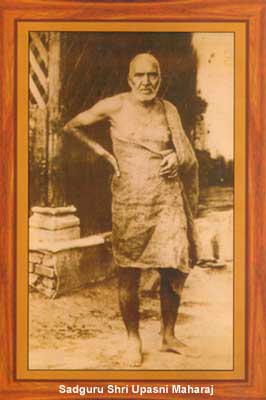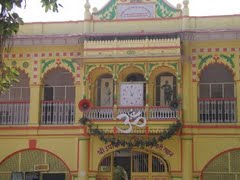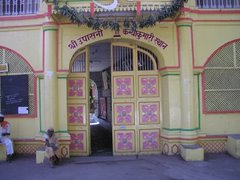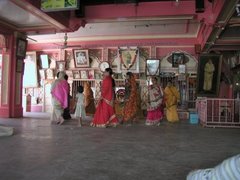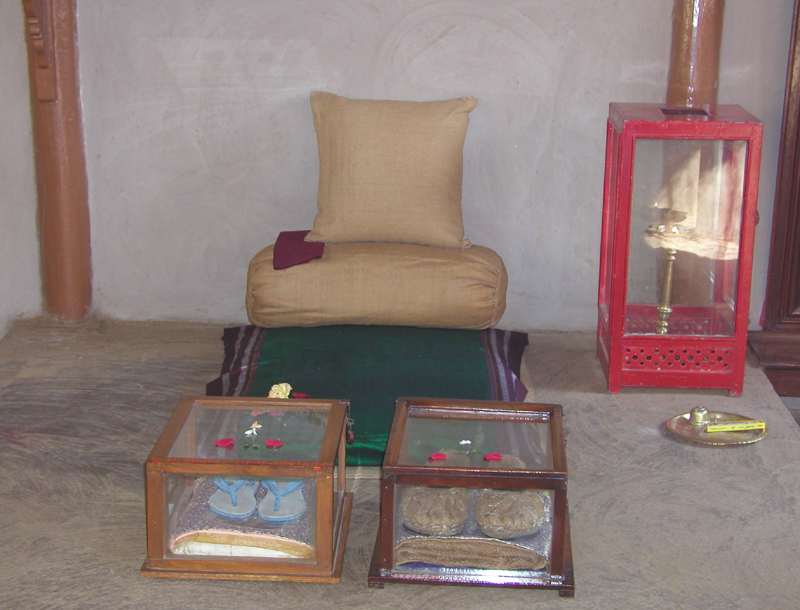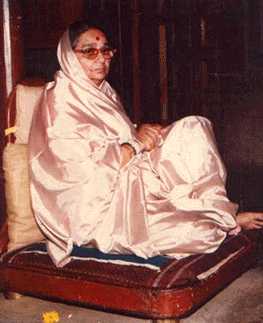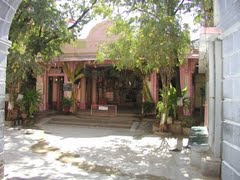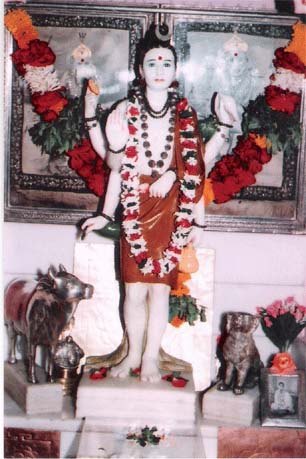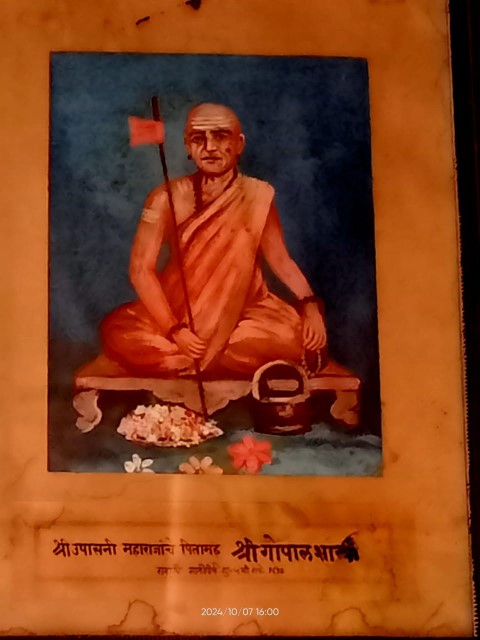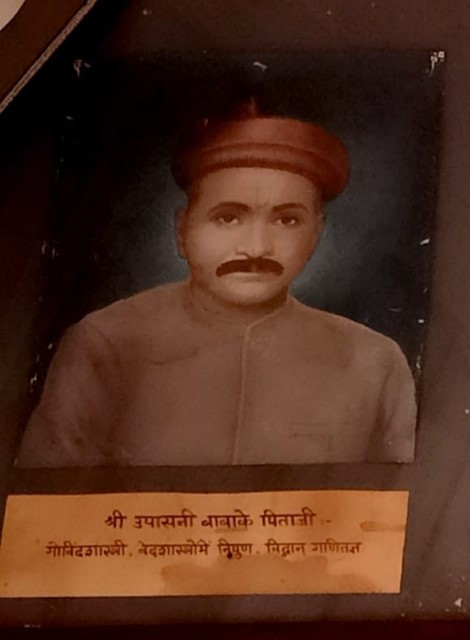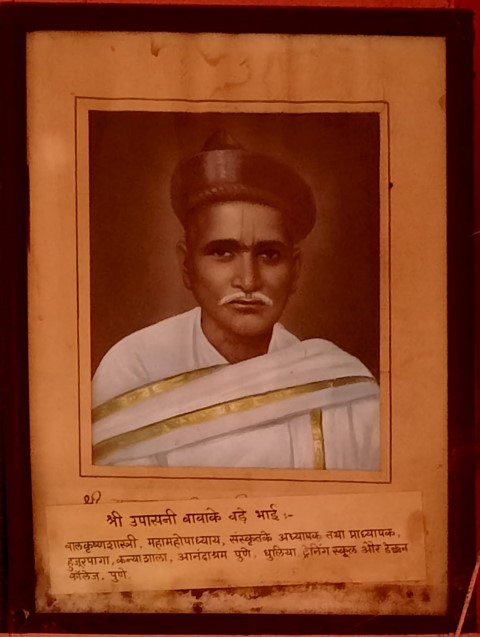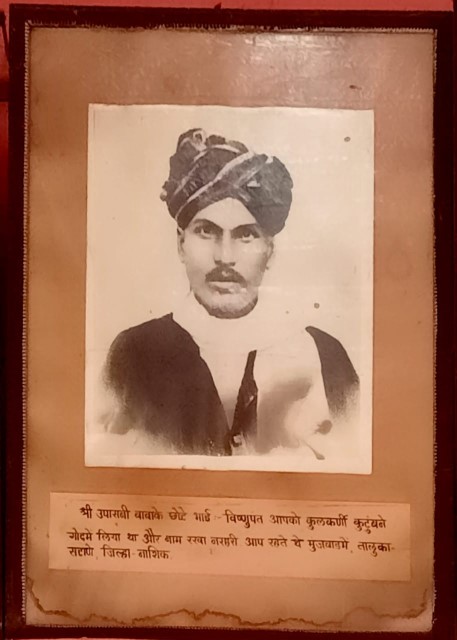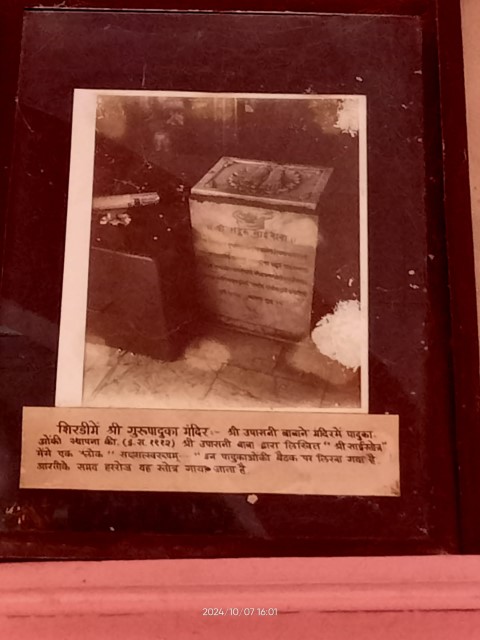Sakori Ashram
About Sakori Ashram Upasni Maharaj began residing in Sakori, a place nearly five kilometers from Shirdi, during July 1917. When Sai Baba dropped His physical form in 1918 Sakori, a small poor village, had already become spiritually rich, with the presence of Upasni Maharaj and a growing fleet of disciples. Maharaj looked after the last rites of Sai Baba as His chief disciple. Maharaj always welcomed hardships. Once in 1921 He locked Himself inside a small bamboo cage. The cage was too small for such a stout person like Maharaj and He was most cramped inside. He said He suffered for the release of His disciples, and was standing as a surety in the divine court for their release. Over thirteen months He confined Himself in that small cage, practically fulfilling all His daily needs from there. The disciples performed His "Arti" and listened to His discourses from within the cage. At last on 31st January 1924, Maharaj released Himself from the cage, and stepped out of it to greet a small child named Godavari.
Sai Baba would send his devotees to Shri Sadguru Upasni Maharaj for darshan. In 1914 Shri Upasi Maharaj left Shirdi for the first time after several years and traveled to Sindi and Nagpur. Here also He would beg for food and live away from cleanliness and comforts. But the smell of the rose attracts, and thus people started visiting Him to pay homage and would worship Him. The Hindu social life of 1915 was full of the feelings of cast and creed barriers. To end this barrier of castism, in February 1915, Shri Upasni Maharaj moved to a poor man Namdeo Mahar's house in Kharagpur. Maharaj belonging to a high brahmin caste voluntarily stayed in a cow stable, and ate food in the house of Namdeo who belonged to a lower and untouchable class. The high caste disciples of Maharaj were forced to come to Namdeo Mahar's house to seek Maharaj's blessing, and be prepared to receive a warm welcome by Namdeo. After some time Maharaj went to Nagpur and then returned to Shirdi to inhabit once again Khandoba's temple. But the atmosphere at the temple was different this time, as devotees began to gather in larger numbers, and happy times began. Gradually it became customary for those who came for Sai Baba's darshan, to also visit the Khandoba temple and meet Upasni Maharaj. Even Sai Baba would ask some of the disciples to go to Sakori, and Maharaj was now being known as His spiritual heir. It so happened one day that a Swami came to meet Sai Baba. This arrogant Swami considered himself next to none in spiritual knowledge. Sai Baba soon asked this Swami for a favor "Will you please go to Sakori and bring me four hundred rupees from Upasni, as I am in urgent need of money" said Sai. "It is very important", He further added. The Swami proudly walked up to Sakori, expecting a warm welcome, being an Ambassador of Sai Baba. Upasni Maharaj was as usual sitting naked under a tree when this arrogant Swami arrived, and started demanding for four hundred rupees. Upasni Maharaj got up immediately as if the matter was really urgent, and before the Swami could understand what he was going to receive so urgently, Maharaj grabbed the Swami and beat him up. The shaken Swami returned to Shirdi to find Sai Baba, smiling over the warm welcome at Sakori. Indeed the Swami had received the real blessings.
In 1941 Sati Godavari Mataji assumed the mantle of her Guru Shri Upasani Baba Maharaj with the strength, simplicity and dignity of a realized being. When she ascended the ‘Gadi’ of spiritual eminence, Mataji was only 26 years old. In the freshness of youth, Mataji had a rare and ethereal beauty of face and form. Today, though she looks deceptively frail and simple, there is a quiet radiance and strength, the strength and radiance of immaculate purity stored up in her. The life eternal flows through her spirit, mind and body, cleansing healing and restoring all those look up to her as the manifestation of Shakti. Soft spoken and gentle, with nothing spectacular about her personality and preaching, Mataji nevertheless encloses in her frail form a dynamic fulfillment of God as Mother.
Chintamani Vinayak
Shri Ek Mukhi Dattatreya Once the queen of the princely state of Gwalior during Shinde dynasty, came for Shri Upasani Baba’s Darshan. She shared with Shri Baba whatever her wish was. She stayed at Sakuri for about a month in the company of Shri Baba. She returned after her wishes came true by the blessings of Shri Baba. Shri Baba initiated her to build a temple of "Shri Ek Mukhi Dattatreya" around year 1925. Mr. Valimbe was the chief architect and civil engineer working on the construction of the temple. He worked under the guidance of Shri Baba and completed the construction of this temple in 1928. The temple initially only had the photo frames of Shri Sai Baba and Shri Upasani Baba and the "Padukas" (footprints) of Shri Saibaba. Shri Upasani Baba stood on the same "Padukas" himself and then also he made Shri Godavari Mataji stand on the same "Padukas" when she still was a small girl. So these "Padukas" have a very special significance.
As you enter the temple, first idol that you see is of Shri Hanuman. This was the same idol close to which Shri Baba stayed in a hut for few days when he first came to Sakuri. Idol of Shri Ek Mukhi Datta which visitors now see was specially sculpted by a famous sculptor from Jaipur in Sakuri itself under the supervision of Shri Upasani baba himself. When Shri Godavari Mataji was watering plants, Shri Upasani Baba called her and ordered her to pose for a photograph. Shri Baba directed the sculptor to take the photograph and directed to carve the idol exactly as per the photograph. This idol of "Ek Mukhi Datta" has the face of Shri Godavari Mataji, dress is of that of the jute cloth as Shri Upasani Baba use to wear it. Since Shri Saibaba is considered the reincarnation of Lord Vishu, to symbolize Shri Saibaba, the idol has the four hands equipped with the symbols like "Shankha" (sea shell), "Chakra" (round blade) , "Gada" (special traditional weapon ) and "Padma" (lotus). So this idol of Shri Datta has a very special significance and unique importance as it symbolizes the unity of Shri Saibaba, Shri Upasani Baba and Shri Godavari Mataji, all the three great icons in this spiritual lineage. This idol was established on "Paush Shuddha Ashtami" (8th day in the first half of the month of "Paush" as per Hindu calendar) in year 1943. Since that day, the birth anniversary of Shri Godavari Mataji and Shri Datta is celebrated on the same day. Both Shri Upasani Baba and Shri Godavari Mataji has a special affection for this temple. They always used to suggest to do any "Satkarma" ( pious activities) in that temple. There used to be a non-stop ritual of the "namasmaran" (chanting the holy name of lord) 24 hours. So the temple used to be always open. However, now temple closes at night. All the rituals in the Sthan take place first in the Datta Mandir. "Kakad Arti" (first "Arti" of the day very early in the morning), "Madhyanna Arti" ("Arti" at noon), "Shejarti" (last "Arti" of the day late at night), takes first in Datta Mandir and then in "Zopdi". Construction of the temple is done very beautifully with the historical architecture. When Lord Sun is transitioning during in the month of March-April through the Zodiacs of "Kumbha" (Sagittarius) and "Meen"(Pisces) as well as during the month of September-October when transitioning through the Zodiacs of "Simha"(Leo) and "Kanya" (Virgo), that is the only time when the rays of Sun directly fall on the face of Shri Ek Mukhi Datta’s idol. At that time, it’s a beautiful experience to see Shri Datta’s idol beaming with the bright shine on the face. Truly, this idol is very beautiful and spiritually enchanting. The people in Sakuri perform, with utmost zeal, the activities like "Sai Charitra Parayan" ( recitation of the biography of Shri Saibaba), "Shri Dyaneshwari Parayan" (recitation of the holy book of "Shri Dyaneshwari"), "Shri Gurucharitra Parayan" (recitation of the biography of "Shri Dattatreya") around "Datta Jayanti" and " Shri Hari Naam Saptaha" (literally meaning chanting the name of the Lord non-stop for a week) in the temple. On the day of "Datta Jayanti" ( celebration of the birth anniversary of Shri Datta) celebrations include "Maha Puja" (literally meaning extended prayers), "Shri Guru Geeta Pathan" (literally meaning the recitation of the holy book of "Shri Guru Geeta"),"Shri Audumbar Pujan" ( literally meaning the prayers towards the "Audumber" tree), "Shri Go Pujan" (literally meaning offering prayers to Cow) and "Shri Shwan Pujan" (literally meaning offering prayers to Dog) and concluded by the " Kirtan" and " Shri Datta Janma" (literally symbolizing the birth of Lord Shri Datta). (Note: All this prayers to the tree, dog, cow are offered as these things are considered closest to Lord Shri Datta and so considered very pious). Next day on the occasion of "Shri Datta Jayanti" big program of "Shri Datta Prasad" takes place during which the food is donated in huge quantities. When devotees look at the photo frames of Shri Upasani Baba and Shri Godavari Mataji hung on the wall of the temple, devotees go back in time of Shri Upasani Baba and Shri Godavari Mataji and experience their grace. In the vicinity of Shri Datta temple, there are other temples of "Shri Ganapati", " Shri Shanidev(Lord Saturn), "Shri Khandoba" temple. In the temple of Lord "Shri Shankar" , the temples of "Vetal" (considered as controller of evil), "Mahamari" (considered as controller of diseases), and "Lord of Plague" (the disease was considered the evil force in olden days) are also established. Once when Sakuri was affected by the Plague epidemic, Shri Upasani Baba personified the evil force of the disease and gave them the respectful treatment by giving them the status of the lords so that the epidemic does not cause the huge loss and established their temples in Sakuri. Similary, during the epidemic, Shri Upasani Baba offered prayer to a big brass bell and asked the people to ring the bell. He also gave a blessings and assured the villagers of Sakuri that there would not be Plague or any such epidemic in the area where the bell would be heard. And in really there was no epidemic in Sakuri after than incidence. In the Sabha Mantap of Ek Mukhi Datta Mandir, devotees can see photographs of Gopal Shastri - Upasani Baba's Grandfather, Govind Shastri - Upasani Baba's father, Balakrishna Shastri - Upasani Baba's Elder Brother, Vishnupant Apko Kulkarni - Younger brother of Upasani Baba and Gurusthan Temple, Shirdi and Sai Mahimna Stotra Inscribed on the Pedestal.
Gopal Shastri - Upasani Baba's Grandfather
Govind Shastri - Upasani Baba's father
Balakrishna Shastri - Upasani Baba's Elder Brother
Vishnupant Apko Kulkarni - Younger brother of Upasani Baba
Gurusthan - Shirdi and Sai Mahimna Stotra Inscribed on the Pedestal There is a procession takes place every Thursday from Shri Datta temple to "Zopdi", on some special occasions also include the decorated chariots. Shri Datta Mandir is a unique place compared to the other places in the state of Maharashtra and believed that Lord Shri Datta fulfills all the wishes of the devotees. This temple has very special place in the hearts of devotees of Shri Upasani Kanyakumari Sthan. "Sakuri Ashram is the only place in the world where you can find a Dattatreya Idol with singleface unlike other places where you will find Dattatreya idol with 3 faces". Sakuri ashram is also the only place where poojas, Homas are performed by Ladies which is not the practice in other parts of the world. The location link to Sakori Ashram is as follows: https://maps.app.goo.gl/FLjmm9sKg79hNn3J9
|
| (Photo Courtesy: Jignesh C.Rajput, Surat) |
